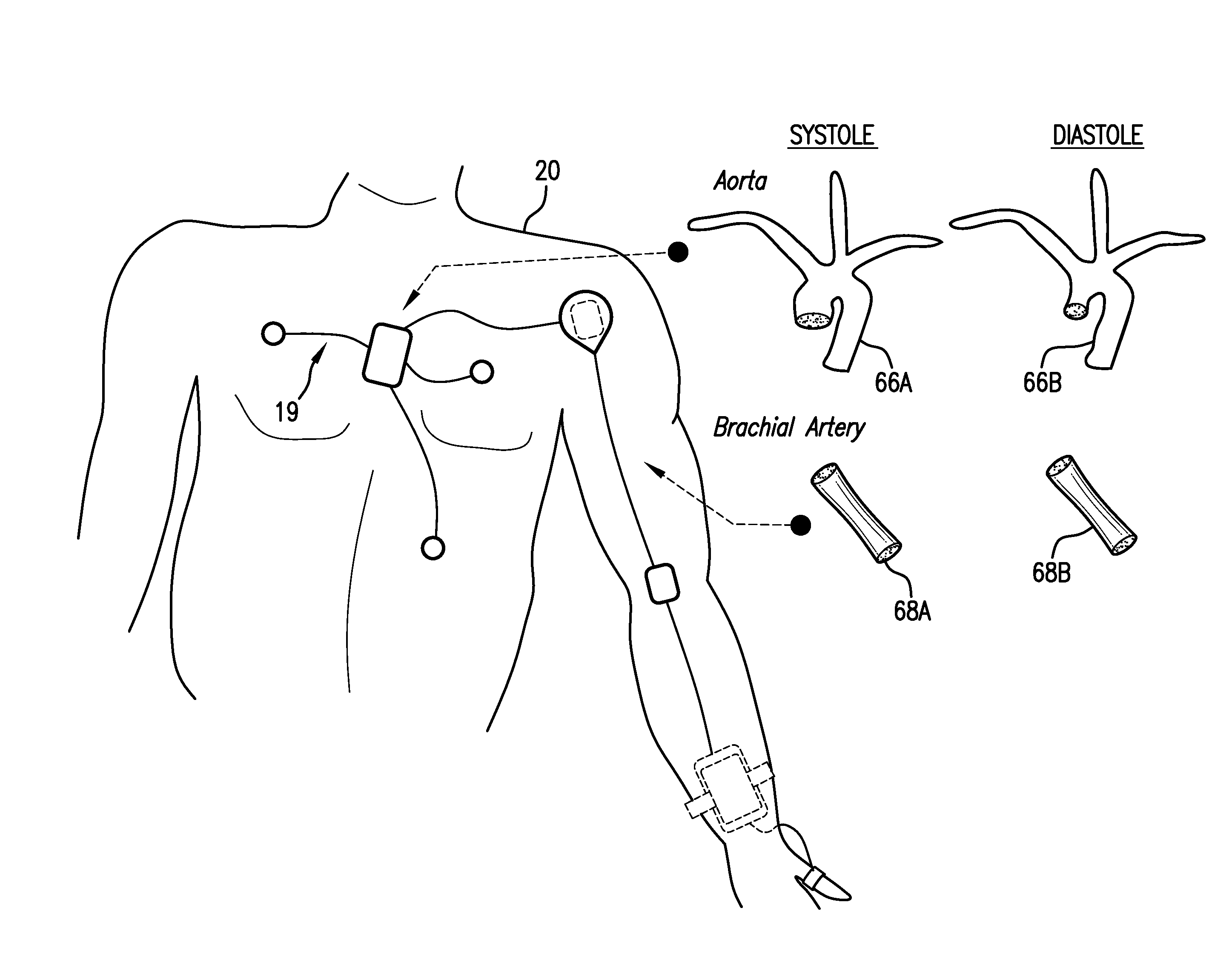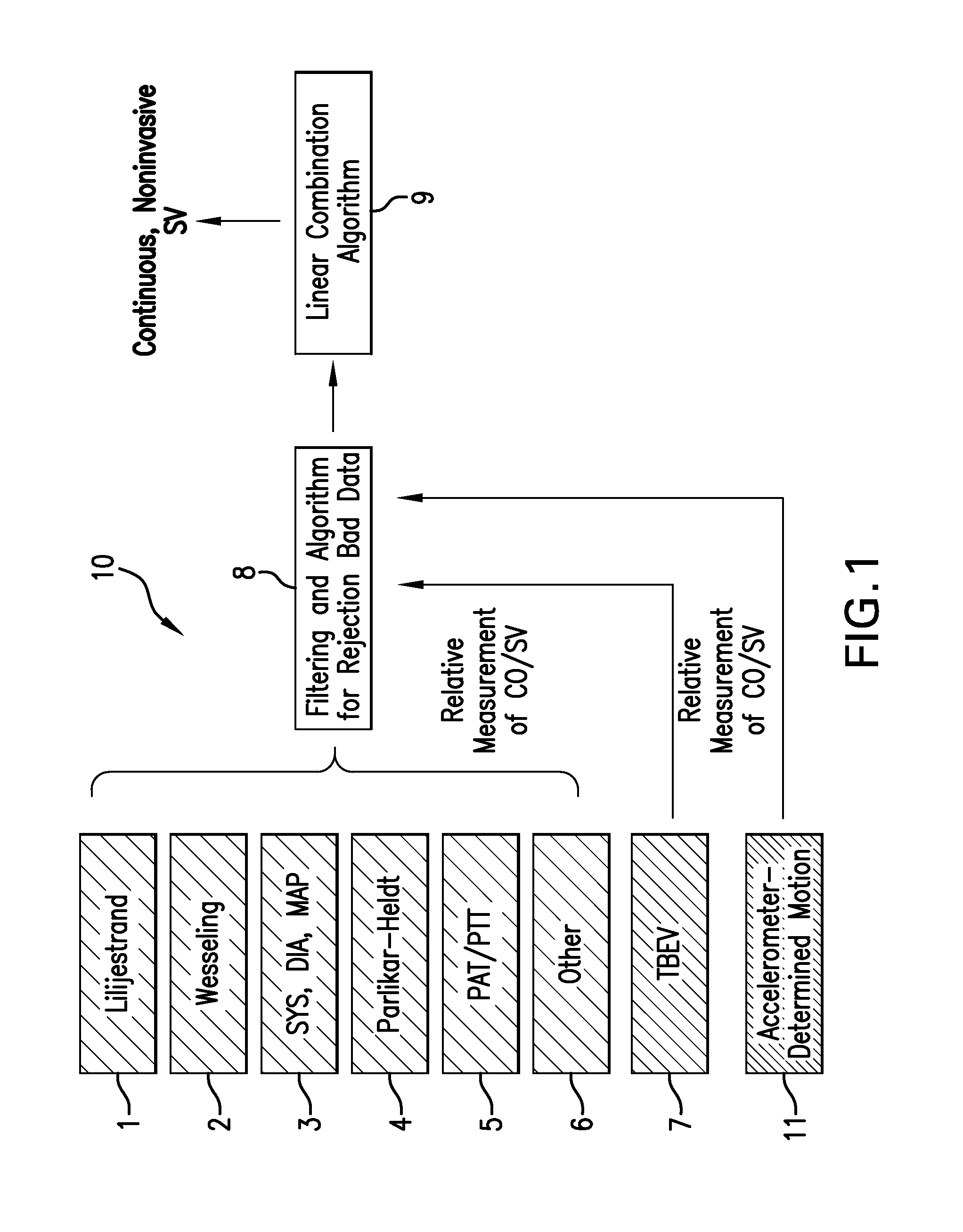Body-worn system for continuous, noninvasive measurement of cardiac output, stroke volume, cardiac power, and blood pressure
a body-worn system and cardiac output technology, applied in the field of medical devices for monitoring cardiovascular properties, can solve the problems of insufficient accuracy in critical conditions, harm to patients, infection and other complications, and achieve the effect of accurately estimating sv/co/cp and effectively monitoring patients
- Summary
- Abstract
- Description
- Claims
- Application Information
AI Technical Summary
Benefits of technology
Problems solved by technology
Method used
Image
Examples
Embodiment Construction
[0078]Measurement Overview
[0079]Referring to FIG. 1, the invention described herein features a body-worn monitor that continuously and non-invasively determines SV from TBEV measurements 7 collected from a patient's CB region, along with a series of SV ‘estimators’1-6 made calculated from cNIBP measurements. The body-worn monitor is described, for example, in the following patent applications, the contents of which are incorporated herein by reference: BODY-WORN VITAL SIGN MONITOR, U.S. Ser. No. 12 / 560,077, filed Sep. 15, 2009; and BODY-WORN VITAL SIGN MONITOR, U.S. Ser. No. 12 / 762,726, filed Apr. 19, 2009. SV measurements made using TBEV 7 and the estimators 1-6 can be incorporated into a ‘hybrid measurement’ 10, operating on a microprocessor within the body-worn monitor, that determines SV and ultimately CO and CP.
[0080]TBEV is a variation of conventional bioimpedance techniques, such as ICG, and measures waveforms from the CB region to determine time-dependent parameters such as ...
PUM
 Login to View More
Login to View More Abstract
Description
Claims
Application Information
 Login to View More
Login to View More - R&D
- Intellectual Property
- Life Sciences
- Materials
- Tech Scout
- Unparalleled Data Quality
- Higher Quality Content
- 60% Fewer Hallucinations
Browse by: Latest US Patents, China's latest patents, Technical Efficacy Thesaurus, Application Domain, Technology Topic, Popular Technical Reports.
© 2025 PatSnap. All rights reserved.Legal|Privacy policy|Modern Slavery Act Transparency Statement|Sitemap|About US| Contact US: help@patsnap.com



